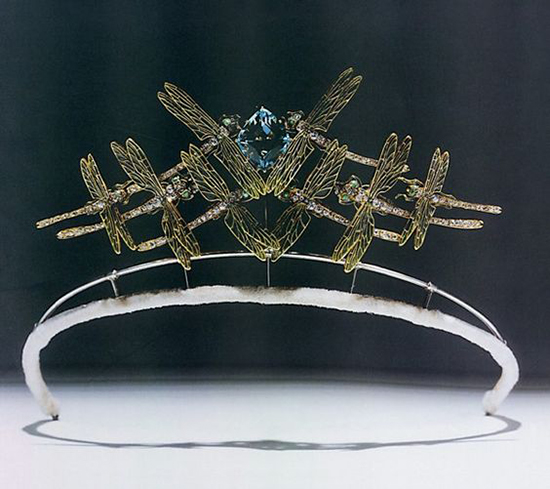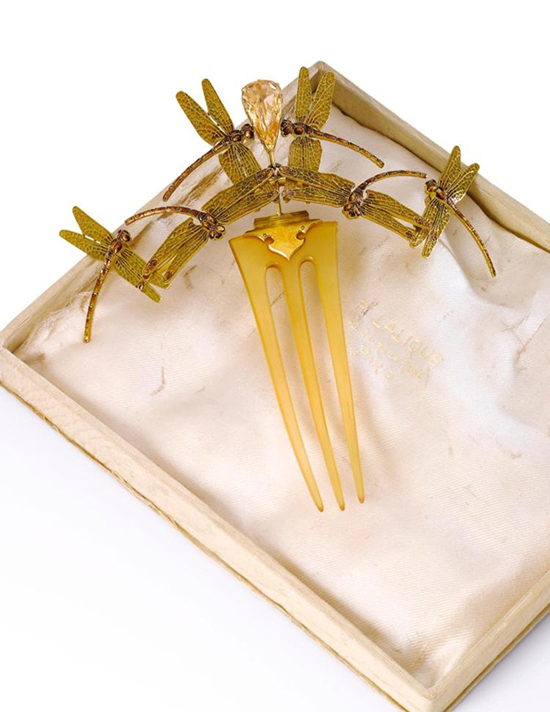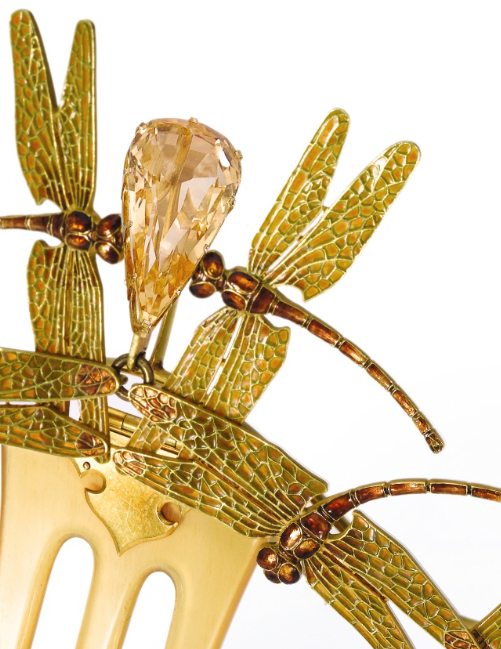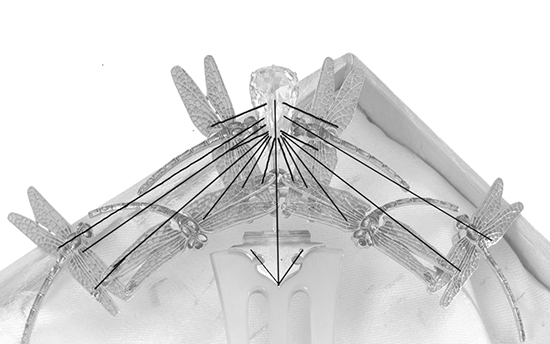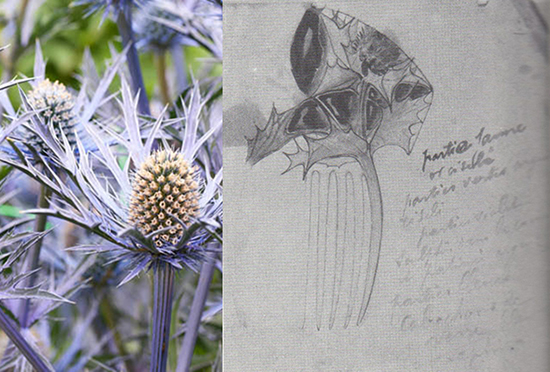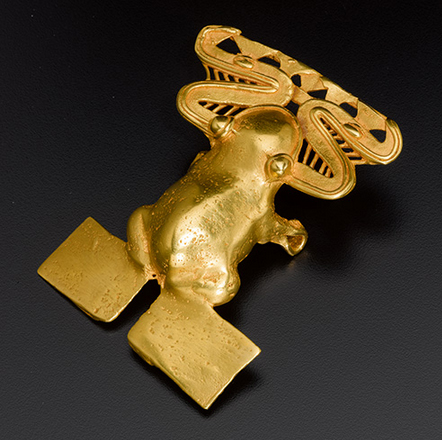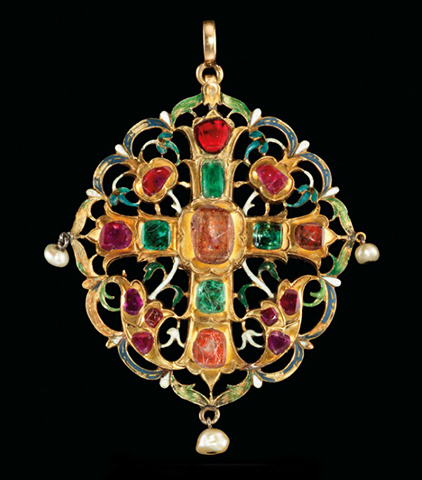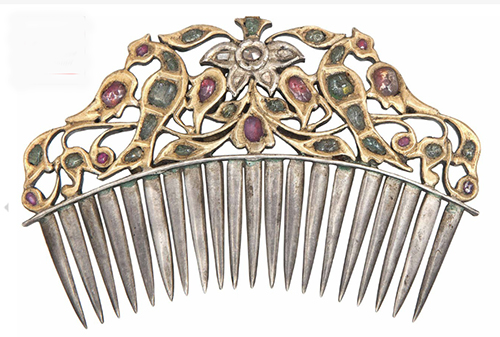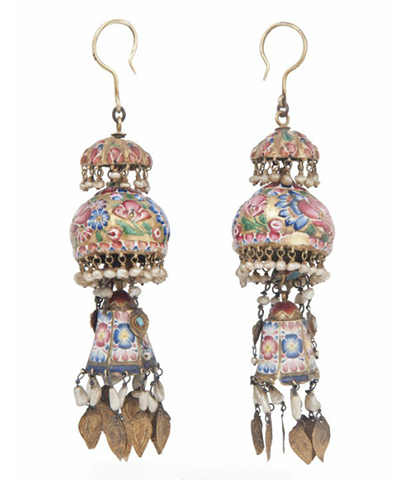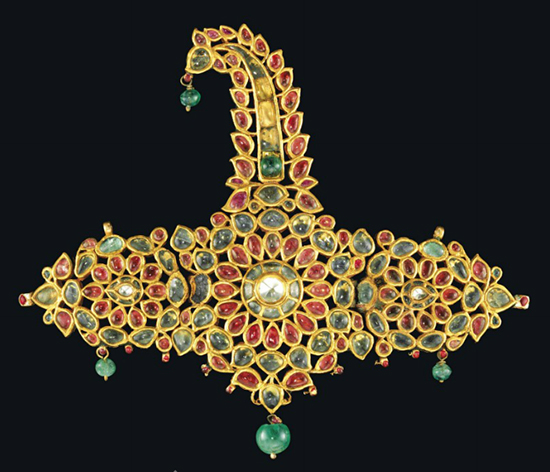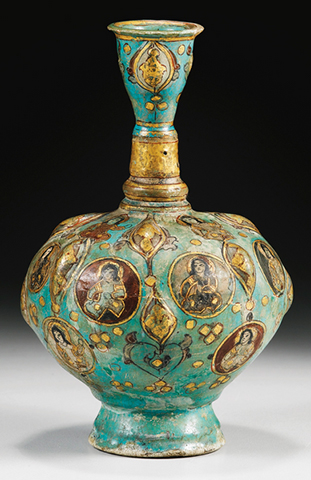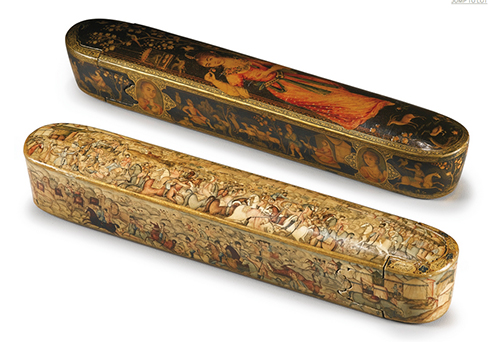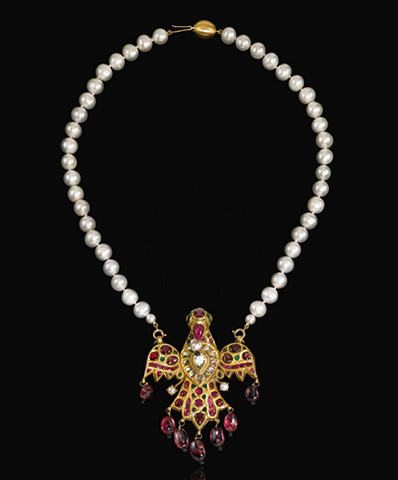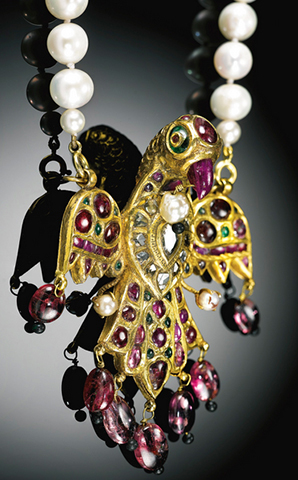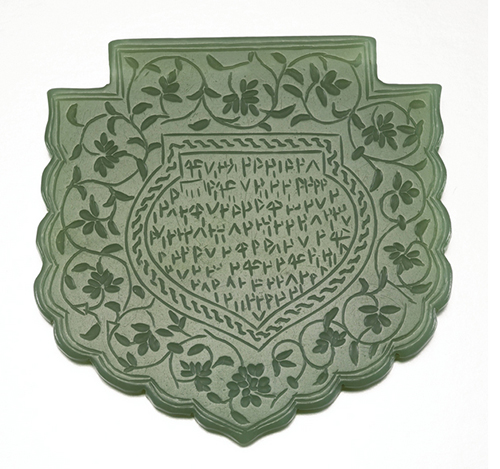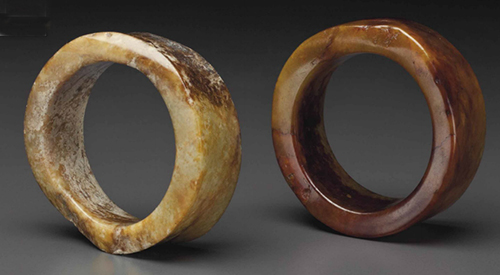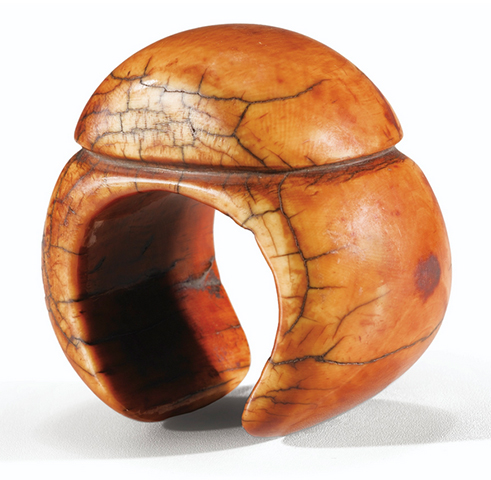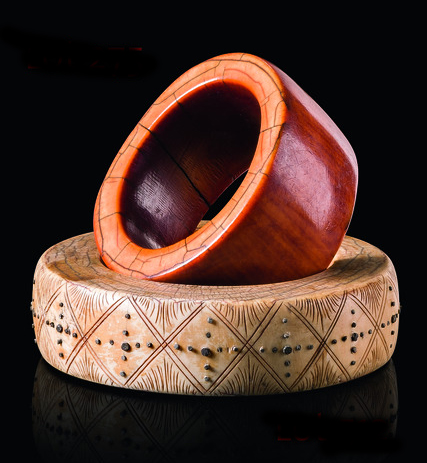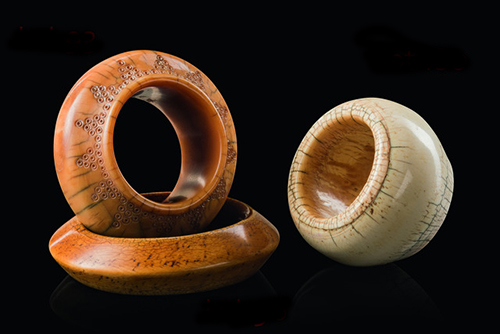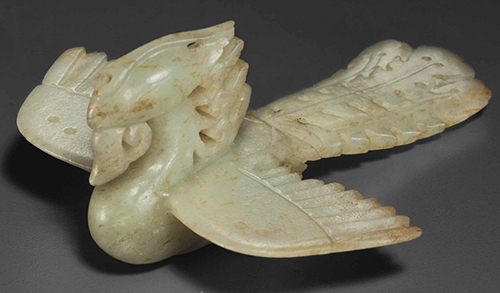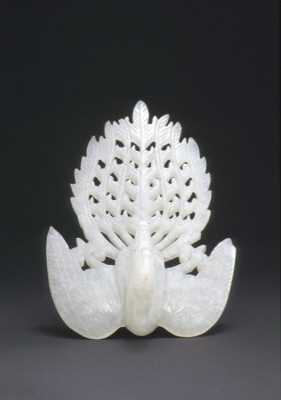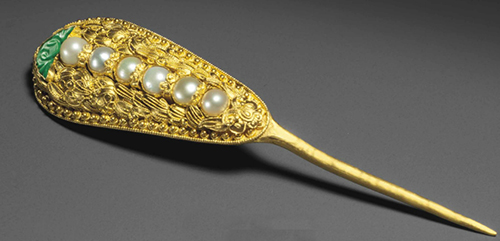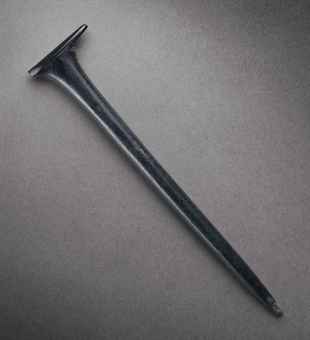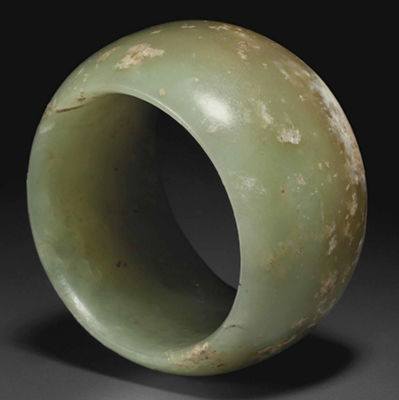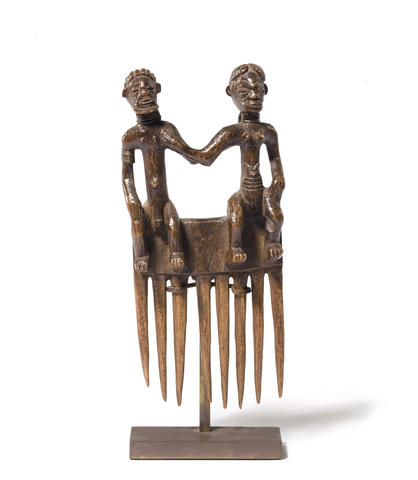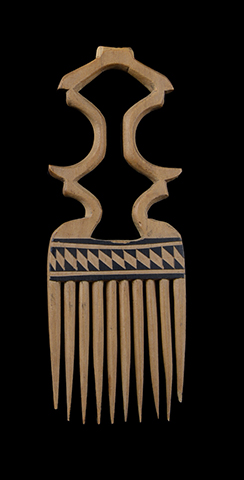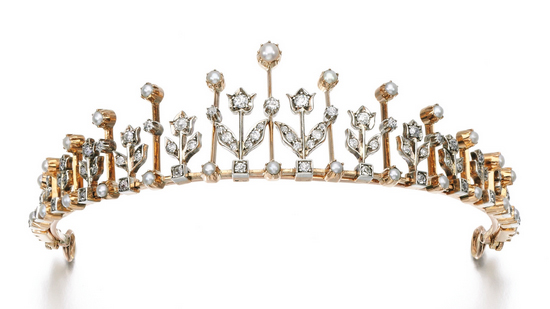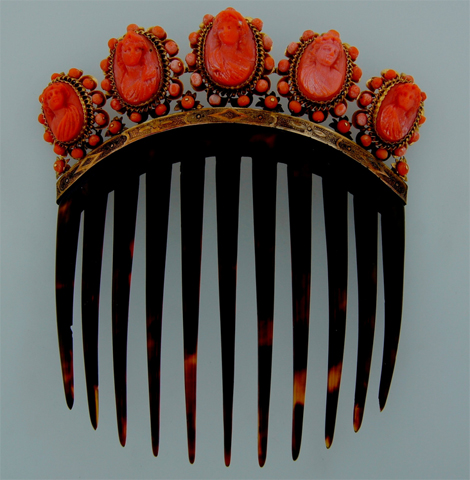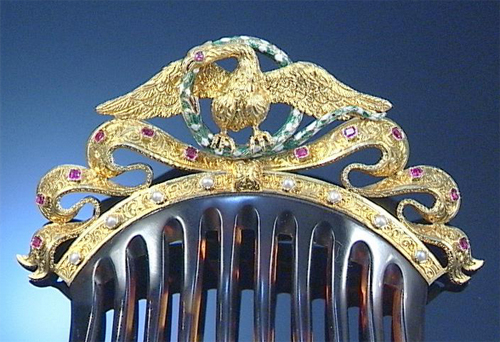
From Japan: A transistor radio designed as an owl. c. 1960’s. H: 7 1/4 in. W: 4 1/2 in. D: 5 in. The tuner buttons also function as the owl’s eyes and turn red, when the radio is on. Owls have many more receptors in their eyes than humans, so they can see in the dark. Those receptors require fresh oxygenated blood to function, which is why their eyes show up as red in a camera flash.
The owl’s significance in Japan may have started with the Ainu, the indigenous people of Hokkaido Japan, whose religion included animal gods. One was the owl god Chikap Kamuy, who was thought to bring prosperity and ward off famine. The Ainu were conquered by the Japanese in the 9th Century.
In Japanese culture, luck is a powerful spiritual energy that connects people, spirits, objects, and places. You open yourself up to receving and giving luck. The owl is a symbol of luck. Therefore, owl charms are ubiquitous.
Now comes our moment of Felliniesque magnificence.
Into this Japanese historical scene marches the American cult movie classic, “Clash of the Titans” (1981). The movie is set during the Corinthian War (395 – 387 BC) with the Achaemenid Empire.
The King of Argos is on the edge of the sea, casting out his daughter Danaë after she bore Zeus’s child, Perseus. She lands on an island. Perseus grows up and wants to marry Andromeda. A labyrinthine plot surrounds and ensues. Andromeda ends up tied to the sea cliffs threatened by the sea monster Kraken.
Zeus orders Athena to give Perseus her owl Bubo, but Athena orders a golden replica of Bubo instead.
And here we have it.
Athena was never represented by the Northern Eagle owl of Central Asia: genus Bubo / species bubo, nor did she have a particular owl that accompanied her. Her symbol was the small owl Athene noctua.
However, a pet mechanical owl named Bubo flies to Kraken holding Medusa’s head so Kraken falls apart. Andromeda is free to marry Perseus and live happily ever after.
Hollywood is genius by mistake. They picked the wrong owl. However, Bubo flew into American popular culture igniting the passions of bloggers, who declared that if someone didn’t respect their favorite mechanical owl, they were dead to them.
The seller of this item on E-bay asked, “This guy was made in JAPAN in the early 1960’s, almost 20 years before The CLASH of the TITANS movie premiered. Wonder where the inspiration for BUBO the OWL came from???”
A scholar must retain the discipline to remain on the brink of the unknown, hoping evidence is discovered that will prove hypotheses. But of one thing I’m confident: we will never know what inspires the imaginations of Hollywood movie directors.

